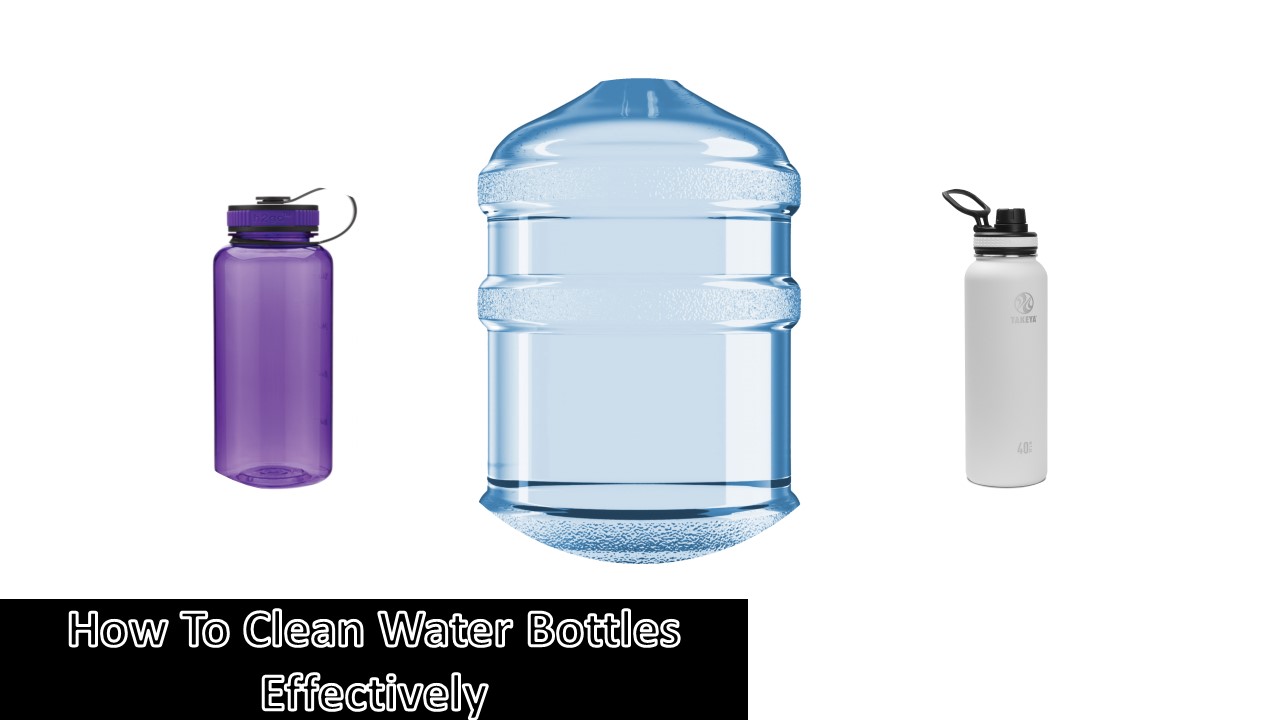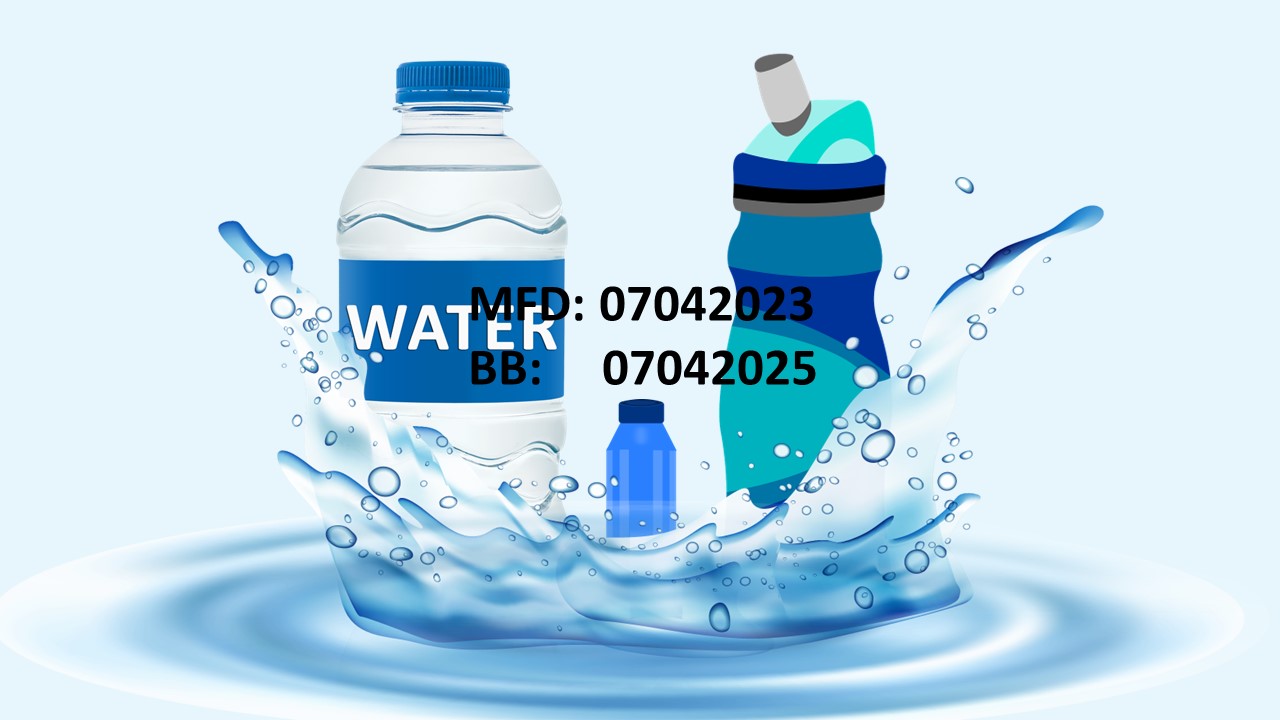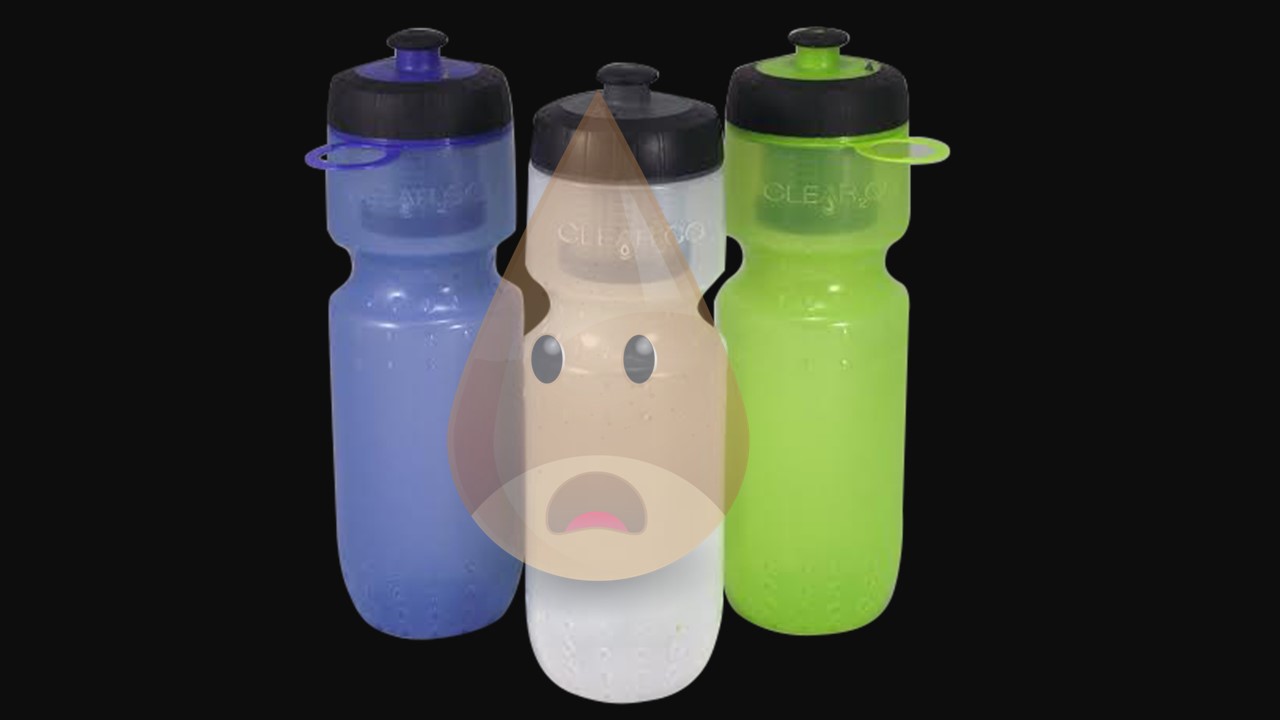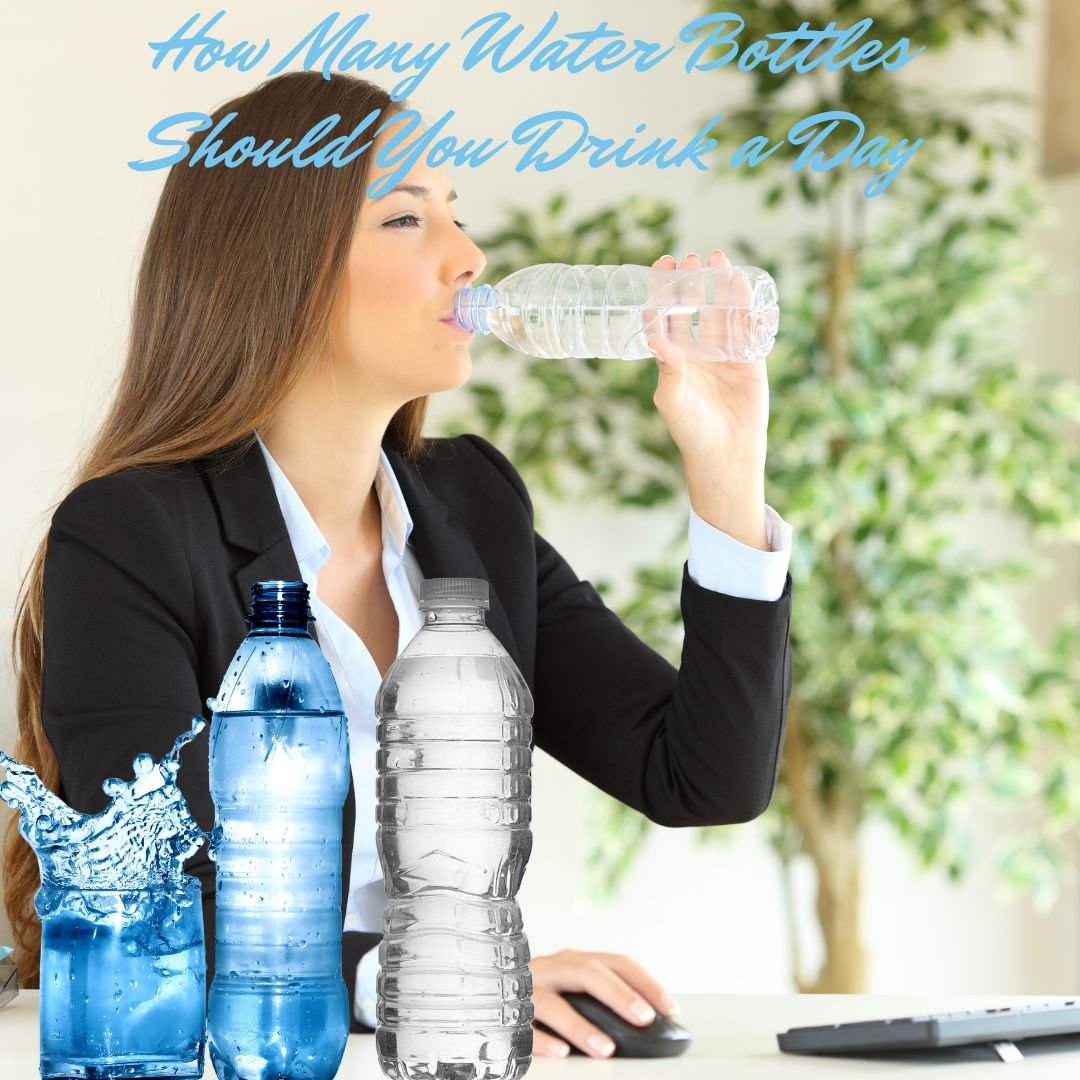Why Are There Bubbles In My Water Bottle – Should You Be Concerned?
We are not new to seeing bubbles in our water bottles, but why are there bubbles in my water bottle? Are the bubbles dangerous or are they something we should just overlook? Bubbles in water bottles can come from a few different sources.
If you are using a bottle with a straw, the bubbles may be coming from the straw itself. If it is a carbonated beverage, the bubbles come from the drink’s carbon dioxide. And if it is plain water, the bubbles may be due to pressure, or temperature.
So, it is clear that many things can cause bubbles in water bottles. If you see bubbles in your water bottle, you want to know if they indicate any problem. In this article, I will answer all your questions regarding why there are bubbles in your water bottle. Read on.
Why Are There Bubbles In My Water Bottle?
If you ever ask “Why are there bubbles in my water bottle,” you are not alone. The bubbles in the water bottle are dissolved gases that are generated as a result of different actions in and outside the bottle.
Reasons why there are bubbles in water bottles include:
- Temperature
- Pressure
- Water chemical composition
- The type of gases in the water
Now, let me explain in detail.
1. Temperature
Bubbles in a water bottle can be caused by several things, but the most common cause is temperature changes. When water is heated, the molecules move faster and start to bump into each other more. This causes the water to expand and creates pockets of air.
As the water cools, the molecules slow down and the air pockets contract. This can cause the water to become slightly negative in pressure, which can cause bubbles to form.
Also, when a bottle of water is at room temperature, it gains low-to-high temperature and loses its ability to dissolve all the atmospheric gases dissolved while cooling. This can cause gases to form tiny bubbles over the cooling water bottle.
If you notice that your water bottle is constantly forming bubbles, it’s likely due to temperature changes. Try storing your water bottle in a cool, dark place to reduce the number of bubbles.
RELATED: How To Clean Water Bottles EffectivelyWithout Odor And Stain
2. Pressure
It turns out that when water is cooled, the molecules slow down and come closer together. This increase in density causes the water to contract, which in turn creates a partial vacuum. As the water bottle cools, the atmospheric pressure outside pushes against the water, causing it to expand and form bubbles.
Usually, the flow of pressure is used when water is being transferred into the water bottle. The pressure intensity will determine the number of bubbles that will be formed in the bottle. It means, the higher the pressure, the more bubbles melt away in the water.
Water calms and loses pressure when the bottle is filled with water. So, it stops dissolving gases and then releases undissolved gases into tiny bubbles. When a low-pressure tap is used to fill a water bottle, there will be fewer bubbles than when a high-pressure tap is used.
3. Water Chemical Composition
You already know that gases dissolve in water at high pressure and low temperatures. The chemical composition of water has a lot to do with the bubbles. For instance, carbon dioxide is dissolved in water at low temperatures and high pressure when producing soda water.
When you shake the bottle of soda water, it will produce a lot of bubbles that dissolve back into the water. That is because of the chemical composition of the soda water and the fact that it was filled at high pressure.
4. The Type Of Gas In The Water
Do you ever notice small bubbles in your bottled water? You might be surprised to learn that the type of gas in the water can actually cause these bubbles. In most cases, the gas is carbon dioxide (CO2), which is dissolved in the water during the bottling process.
When the water is bottled under pressure, the CO2 is forced into the solution and becomes supersaturated. When the bottle is opened, the CO2 comes out of the solution and forms bubbles.
So, why is this a problem? Well, while these bubbles might not be harmful to you, they can actually cause the water to go flat and lose its flavor. In addition, the bubbles can make it difficult to drink the water, especially if you are trying to take a sip from a straw.
Bubbles can also form if your water bottle is not sealed properly. If there is air leaking into the bottle, the air will mix with the water and form bubbles. This is why it is important to make sure your bottle is always sealed tightly.
Tips To Minimize Or Eliminate Bubbles In Water Bottles
Here are some practical tips to minimize or eliminate bubbles in water bottles:
1. Release Trapped Air: Before sealing the water bottle, gently tap or shake it to release any trapped air. This helps reduce the likelihood of bubbles forming when you open the bottle later.
2. Refrigerate Carbonated Water: If you’re dealing with carbonated water, refrigerating it can help reduce the release of carbon dioxide gas. Cooler temperatures help retain the dissolved gas, minimizing bubble formation when you open the bottle.
3. Pouring Technique: When pouring water from the bottle, try to pour it slowly and at an angle to minimize turbulence. This can help prevent excessive agitation, which can lead to the formation of bubbles.
4. Avoid Aggressive Shaking: Vigorously shaking a water bottle can introduce air into the water, leading to the formation of bubbles. Handle your water bottles with care and avoid aggressive shaking.
5. Choose Still Water: If bubbles are a persistent issue, consider opting for still water instead of carbonated or sparkling water. Still water doesn’t contain dissolved carbon dioxide, reducing the likelihood of bubble formation.
6. Use Filtered Water: Using filtered water can help minimize potential chemical reactions that may lead to bubble formation. Filters remove impurities and contaminants that can interact with air or other substances, reducing the chances of bubbles forming.
7. Proper Sealing: Ensure that the water bottle is properly sealed after use. A secure seal helps prevent air from entering the bottle and reduces the chances of bubbles forming.
8. Store in a Cool Place: Store water bottles in a cool place, away from direct sunlight or sources of heat. Elevated temperatures can accelerate the release of gases and increase the likelihood of bubbles forming.
The Best Water Bottles That Help Reduce Or Prevent Bubbles In Water Bottles
When it comes to choosing water bottles that can help reduce or prevent bubbles, here are some recommendations:
Product Image | Product Name | Key Features | Rating | Price |
| ||||
| ||||
| ||||
| ||||
| ||||
| ||||
| ||||
| ||||
| ||||
|
What To Do If Your Water Bottle Is Constantly Bubbling
If your water bottle is constantly bubbling, it could be an indication of a problem with the water or the bottle itself. Here are some steps you can take to address the issue:
1. Check Water Quality: The first thing to do is to ensure the water you’re using is of good quality. If you’re using tap water, check if it’s safe for consumption and meets the relevant standards. If you’re using bottled water, make sure it’s from a reputable brand and hasn’t passed its expiration date.
2. Change Water Sources: If the bubbling persists with one water source, try using water from a different source or another water bottle. This will help you determine if the issue is specific to the water or the bottle.
3. Inspect the Bottle: Check the bottle for any damage or defects. Cracks or leaks in the bottle could introduce air into the water, causing bubbles. If you find any issues, consider replacing the bottle.
4. Clean the Bottle Thoroughly: Sometimes, residue or particles inside the water bottle can lead to bubbling. Clean the bottle thoroughly using warm water and mild soap. Rinse it well to ensure there’s no soap residue left behind.
5. Avoid Agitation: Bubbles can form when water is agitated or shaken vigorously. Be gentle when handling the water bottle and avoid shaking it unnecessarily.
6. Let the Water Rest: If you’ve recently filled the bottle, let it sit for a while. Bubbles can form due to changes in temperature and pressure during filling. Allowing the water to settle might help reduce bubbling.
7. Opt for Different Bottle Materials: If you’re using a plastic water bottle, consider switching to glass or stainless steel. Plastic bottles can be more prone to retaining gases, leading to bubbling.
It’s important to address the issue promptly, especially if you notice any unusual odors or tastes in the water, as these could indicate potential health and safety concerns. Always prioritize using clean and safe drinking water to ensure your well-being.
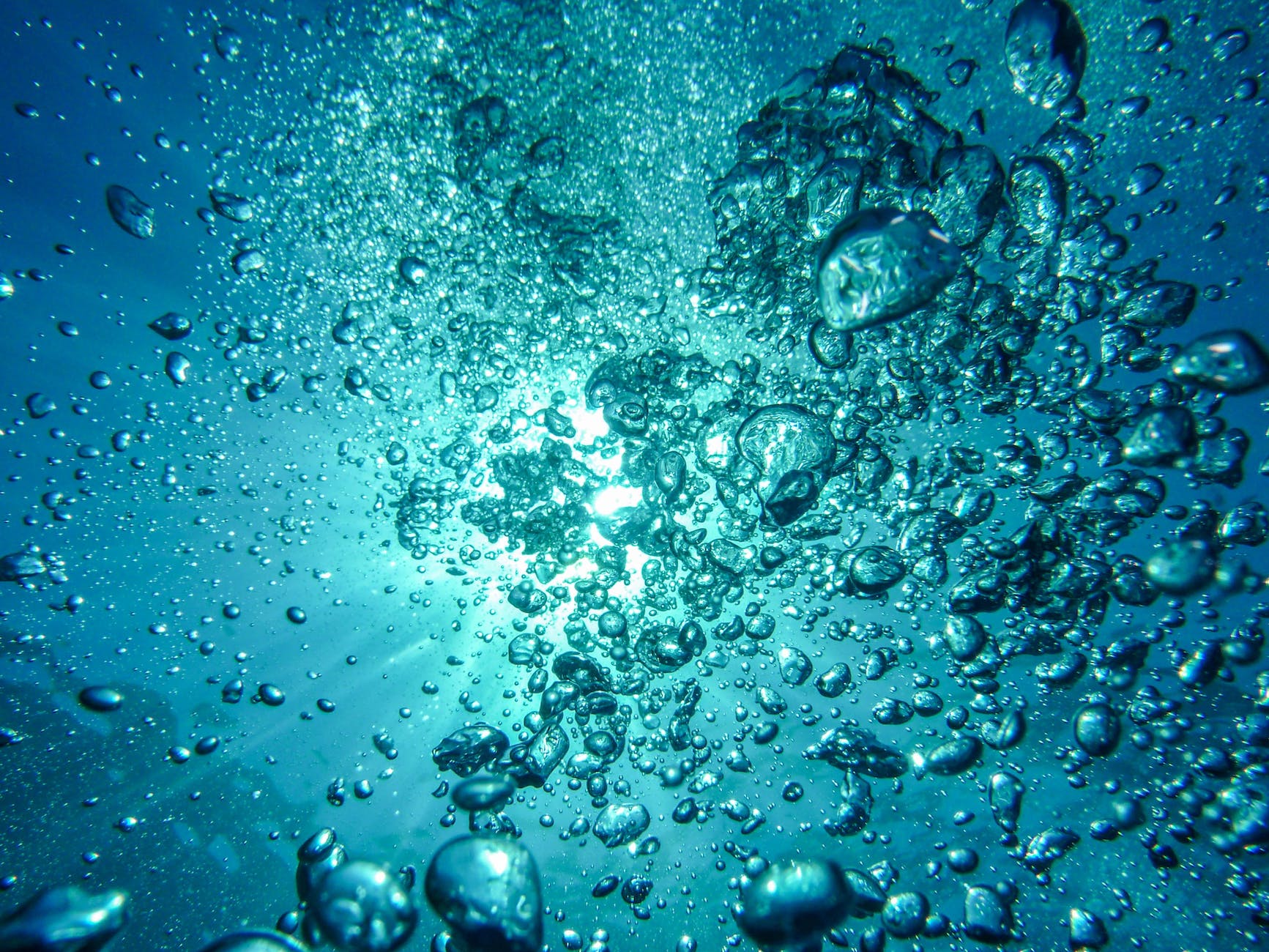
Potential Health And Safety Concerns Related To Bubbles In Water Bottles
Bubbles themselves may not always indicate serious health risks, but they could be associated with certain factors that warrant attention. Here are some points to consider:
- Contaminated Water: Bubbles in water bottles could indicate the presence of gases released by contaminants in the water. If the water source is not properly treated or filtered, it may contain harmful substances such as bacteria, chemicals, or pollutants. These contaminants can lead to health issues if consumed.
- Degraded Bottle Material: Bubbles may form in water bottles due to the degradation of the bottle material, especially in the case of plastic bottles. As plastic ages or when exposed to high temperatures, it can release chemicals or microplastics into the water, which might pose health risks when ingested.
- Mold or Biofilm Growth: If the water bottle is not cleaned and dried thoroughly after each use, it can become a breeding ground for mold or biofilm. The presence of these microorganisms can lead to gastrointestinal problems or other health issues.
- Leaking Chemicals: In some cases, certain chemicals from the bottle material, such as BPA (Bisphenol A), may leach into the water, particularly if the bottle is exposed to high temperatures. BPA is a known endocrine disruptor and has been linked to various health concerns.
- Carbonation: If the water bottle contains carbonated water, the bubbles are a natural consequence of dissolved carbon dioxide. While carbonated water is generally safe to consume, excessive intake may cause bloating or discomfort in some individuals.
- Dehydration: In certain situations, bubbles could indicate that the water has undergone some level of evaporation, which might lead to dehydration if not addressed.
To address these health and safety concerns:
- Always use water from a trusted source, such as filtered tap water or bottled water from reputable brands.
- Opt for water bottles made from safe and durable materials like stainless steel or glass.
- Clean and dry the water bottle thoroughly after each use to prevent mold or biofilm growth.
- Store the water bottle in a cool and dry place to minimize the risk of chemical leaching from plastic bottles.
- If using carbonated water, consume it in moderation and consider opting for still water if excessive gas causes discomfort.
If you have persistent concerns about your water quality or health, it’s advisable to consult a healthcare professional or a water quality expert for a thorough assessment. It’s essential to prioritize safe and clean drinking water to safeguard overall well-being.
Tips And Tricks To Prevent The Formation Of Bubbles In Water Bottles
Preventing the formation of bubbles in water bottles involves a combination of proper handling, storage, and selecting the right type of bottle. Here are some practical tips and tricks to help you avoid bubbling issues:
1. Choose High-Quality Bottles: Opt for water bottles made from high-quality materials like stainless steel or glass. These materials are less prone to retaining gases and are generally more durable, reducing the chances of bubbles forming.
2. Avoid Using Old or Damaged Bottles: Replace water bottles that show signs of wear, cracks, or damage. Old bottles may have degraded materials that could affect the water quality and lead to bubbling.
3. Clean Bottles Regularly: Clean your water bottle thoroughly after each use with warm water and mild soap. Rinse it well to ensure there’s no soap residue left behind. Regular cleaning helps prevent the growth of mold or biofilm, which can contribute to bubbling.
4. Dry Bottles Properly: After cleaning, allow the water bottle to dry completely before refilling it. Moisture left inside the bottle can promote the growth of bacteria and affect the water’s taste and quality.
5. Store Bottles Properly: When not in use, store the water bottle in a clean, dry, and well-ventilated area. Avoid exposing the bottle to direct sunlight or high temperatures, as this can cause chemicals to leach from plastic bottles.
6. Use Filtered Water: Consider using filtered tap water or bottled water from a reliable source to minimize the risk of contaminants that may lead to bubbling.
7. Avoid Agitation: Be gentle when handling the water bottle, and avoid shaking it vigorously, as this can introduce air into the water and cause bubbles to form.
8. Allow Water to Settle: If you notice bubbles after filling the bottle, let it sit for a while to allow any excess gases to dissipate. After a few minutes, gently agitate the water to release any remaining bubbles.
9. Opt for Still Water: If bubbles are a concern, consider choosing still water instead of carbonated or sparkling water, as carbonation naturally creates bubbles.
10. Choose the Right Bottle Size: Select a water bottle size that aligns with your hydration needs to avoid excessive empty space where gases can accumulate.
11. Monitor Water Quality: Pay attention to any changes in the water’s taste, odor, or appearance. If you notice any abnormalities, consider changing the water source or consulting a water quality expert.
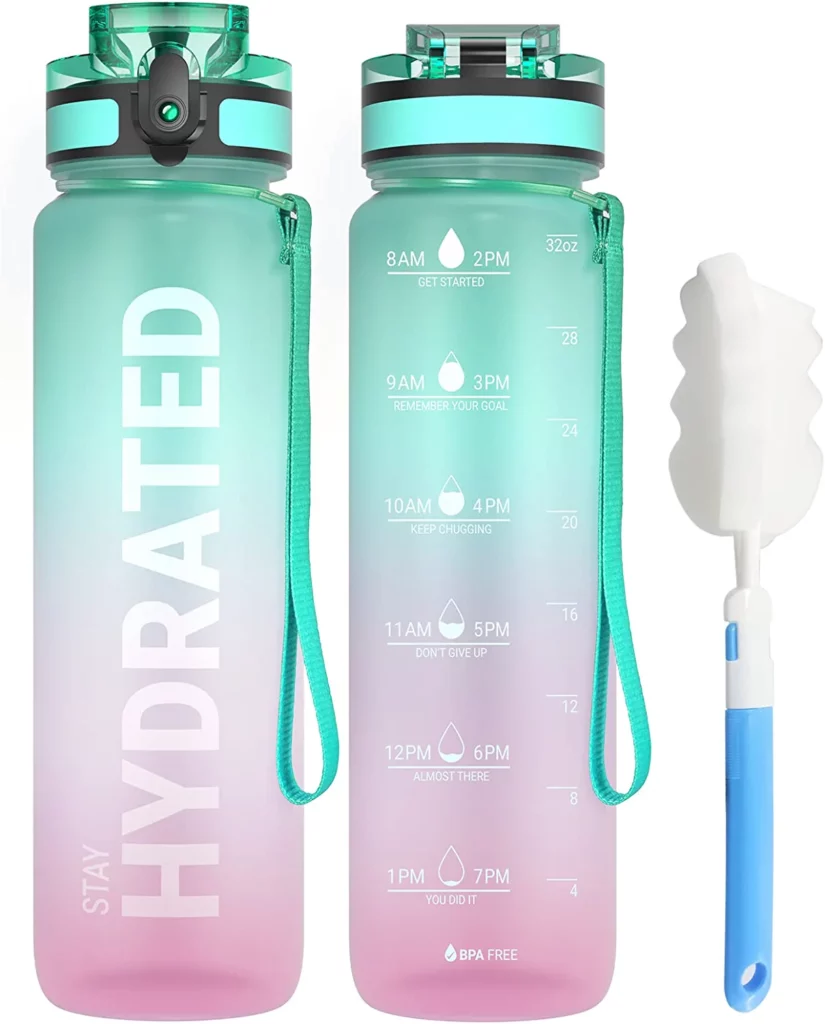
How To Keep Water Bottles Clean And Well-Maintained
Proper water bottle maintenance is essential to ensure safe consumption and minimize the occurrence of bubbles. Follow these steps to keep your water bottle clean and well-maintained:
- Daily Cleaning: Clean your water bottle thoroughly after each use to prevent the buildup of bacteria, mold, or odors. Use warm water and a small amount of mild dish soap to wash the bottle’s interior and exterior. Pay special attention to the bottle’s cap or lid, as these areas often trap residues.
- Rinse Thoroughly: After washing, rinse the water bottle with clean water several times to remove any soap residue. Soap residue can affect the water’s taste and may lead to bubbling.
- Use Bottle Brushes: If your water bottle has a narrow neck or hard-to-reach areas, use a bottle brush designed for cleaning water bottles. These brushes can effectively remove residue from hard-to-reach places.
- Avoid Harsh Cleaners: Avoid using harsh chemicals, bleach, or abrasive cleaners, as they can damage the bottle material and be harmful if accidentally ingested. Stick to mild dish soap or, if needed, a mixture of water and vinegar for a natural cleaning solution.
- Air-Dry Completely: Allow the water bottle to air-dry thoroughly after cleaning. Propping it upside down or using a bottle drying rack can facilitate proper drying and prevent the growth of mold or bacteria due to trapped moisture.
- Deep Cleaning: For periodic deep cleaning, you can use a mixture of water and baking soda or water and vinegar. Let the solution sit in the bottle for a few hours before scrubbing and rinsing thoroughly.
- Keep It Separate: Avoid storing other liquids or beverages in your water bottle, especially those that can leave strong odors or flavors. If you use the water bottle for anything other than water, make sure to clean it thoroughly immediately after use.
- Regular Inspections: Periodically inspect the water bottle for any signs of wear, cracks, or damage. Replace the bottle if you notice any issues to maintain water quality and prevent potential contamination.
- Storing It Properly: When not in use, store the water bottle with the cap or lid removed, in a clean and well-ventilated area. This allows air circulation and helps prevent the buildup of odors or mold.
- Avoid Extreme Temperatures: Refrain from exposing the water bottle to extreme temperatures, whether hot or cold, as this can affect the bottle’s material and potentially lead to bubbling or chemical leaching.
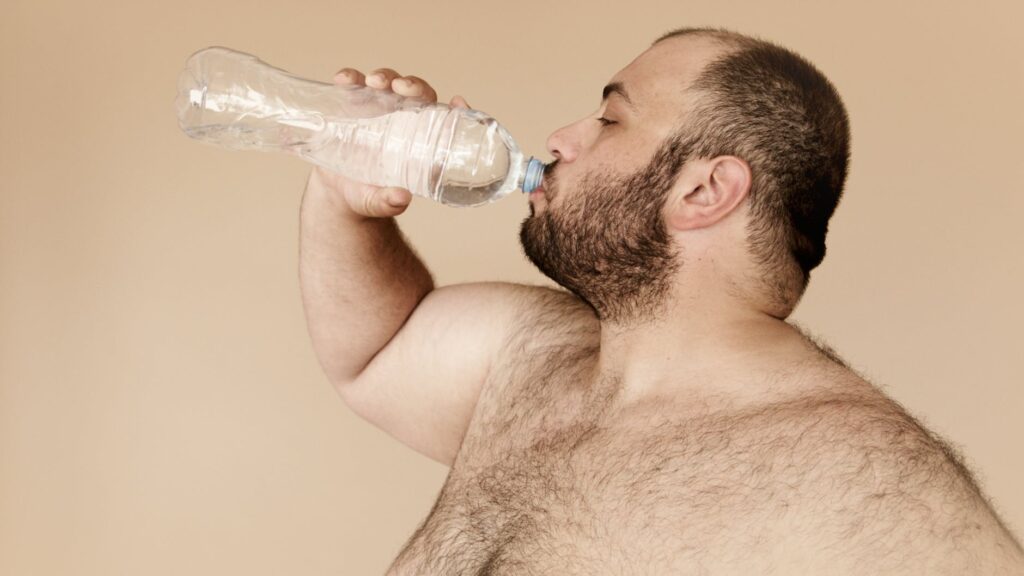
Impact Of Bubbles In Water Bottles On Hydration Process
Bubbles in water bottles, especially those caused by factors like carbonation or dissolved gases, can potentially impact the hydration process and may lead to changes in the taste and properties of the water. Here’s how bubbles can affect hydration:
1. Carbonation and Hydration
Carbonated or sparkling water contains dissolved carbon dioxide, which creates bubbles when the bottle is opened or disturbed. While carbonated water can be refreshing and enjoyable for some people, it may not be as effective at hydrating the body compared to still water.
The carbonation in the water can create a feeling of fullness or bloating, which might deter some individuals from consuming an adequate amount of water for optimal hydration.
2. Loss of Carbonation
Over time, carbonated water can lose its fizziness and carbonation, especially if the bottle is left open or not sealed tightly. As carbonation diminishes, the water becomes flatter and may lose its appeal, potentially leading to reduced water intake.
3. Taste Alterations
Bubbles in water can sometimes carry dissolved gases, which may slightly alter the taste of the water. For instance, some people might detect a slightly acidic or tangy taste in carbonated water due to the presence of carbon dioxide.
Such taste alterations could affect the palatability of the water and influence one’s willingness to drink it.
4. Dehydration Risk with Sugary Drinks
Some carbonated beverages or flavored water with added sugars might be less hydrating than plain water. The high sugar content can lead to a diuretic effect, causing the body to lose more water through increased urine production, potentially negating the hydration benefits.
5. Mineral Content
Bubbling in water might also indicate a higher mineral content, depending on the water source. While minerals can be beneficial, excessive amounts might affect the water’s taste and influence the way it quenches thirst.
6. Temperature and Bubbles
Changes in temperature can affect how bubbles behave in water. For example, cold water can hold more dissolved gases than warm water. So, when a cold water bottle is left in a warmer environment, bubbles may form as the gases are released due to the temperature change.
In general, for optimal hydration, it is recommended to drink plain, still water without added sugars or carbonation. Plain water is readily absorbed by the body and does not carry any additional taste, making it easy to consume in sufficient quantities throughout the day.
However, it’s important to note that individual preferences vary, and some people may find carbonated water or water with bubbles more enjoyable to drink. As long as the overall water intake meets daily hydration needs, the occasional consumption of carbonated or flavored water is not harmful.
Ultimately, the most critical factor for proper hydration is to drink enough water daily, whether it is still or carbonated, to maintain optimal health and well-being.
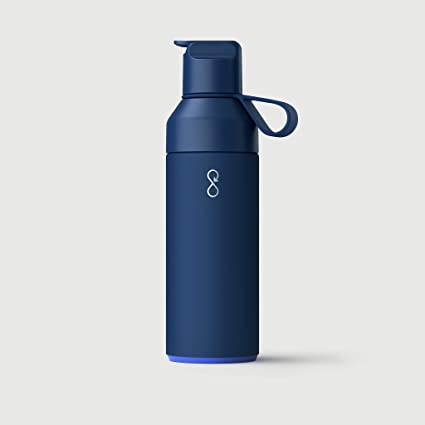
How To Choose The Right Water Bottle (Why Are There Bubbles In My Water Bottle)
Selecting the right water bottle is essential for ensuring convenience, sustainability, and maintaining the quality of the water you drink. Consider the following factors when choosing a water bottle that best suits your preferences and lifestyle:
Material
- Stainless Steel: Stainless steel water bottles are durable, non-toxic, and can keep beverages hot or cold for extended periods. They are excellent for outdoor activities, workouts, and everyday use.
- Glass: Glass bottles are non-reactive and do not retain odors or flavors. They are a good option for those who prefer a clean taste and want to avoid potential chemical leaching.
- BPA-Free Plastic: Look for BPA-free plastic bottles if you prefer a lightweight option. These bottles are suitable for casual use but may not be as durable as stainless steel or glass.
- Silicone: Some collapsible water bottles are made of silicone, which is flexible and space-saving when empty. They are ideal for travelers and those with limited bag space.
Size
Consider your daily water intake needs when choosing the bottle size. Smaller bottles (e.g., 16-24 ounces) are convenient for short outings, while larger ones (e.g., 32-40 ounces) are suitable for longer activities or to reduce the need for frequent refilling.
Insulation
Insulated bottles maintain the temperature of your beverages, keeping them hot or cold for an extended period. If you enjoy sipping hot tea or cold water throughout the day, opt for a double-walled insulated bottle.
Lid Type
- Screw-on lids are secure and prevent leaks, making them suitable for sports and outdoor activities.
- Flip-top or straw lids are convenient for easy access while on the go or during workouts.
- Wide-mouth openings are easy to fill with ice cubes or fruit for infused water.
Cleaning and Maintenance
- Consider how easy it is to clean the bottle, especially if it has narrow neck or complex parts. Dishwasher-safe bottles can simplify cleaning.
- Look for bottles with removable parts, such as lids and straws, for thorough cleaning.
Environmental Impact
Choose reusable bottles to reduce single-use plastic waste. Opt for materials that are eco-friendly and have a minimal impact on the environment.
Ergonomics and Grip
Check the design and grip of the bottle to ensure it is comfortable to hold, especially during physical activities.
Portability
If you plan to carry the bottle in a bag or backpack, ensure it fits easily and securely without leaking.
Additional Features
- Some bottles come with built-in filters or fruit infusers for flavored water.
- Collapsible bottles are ideal for travel and outdoor adventures due to their space-saving design.
Budget
Consider your budget when choosing a water bottle, as prices can vary depending on the material and features.
Ultimately, the right water bottle is one that complements your lifestyle, meets your hydration needs, and aligns with your environmental values. With these factors in mind, you can confidently choose a water bottle that will be a reliable companion on your daily adventures.
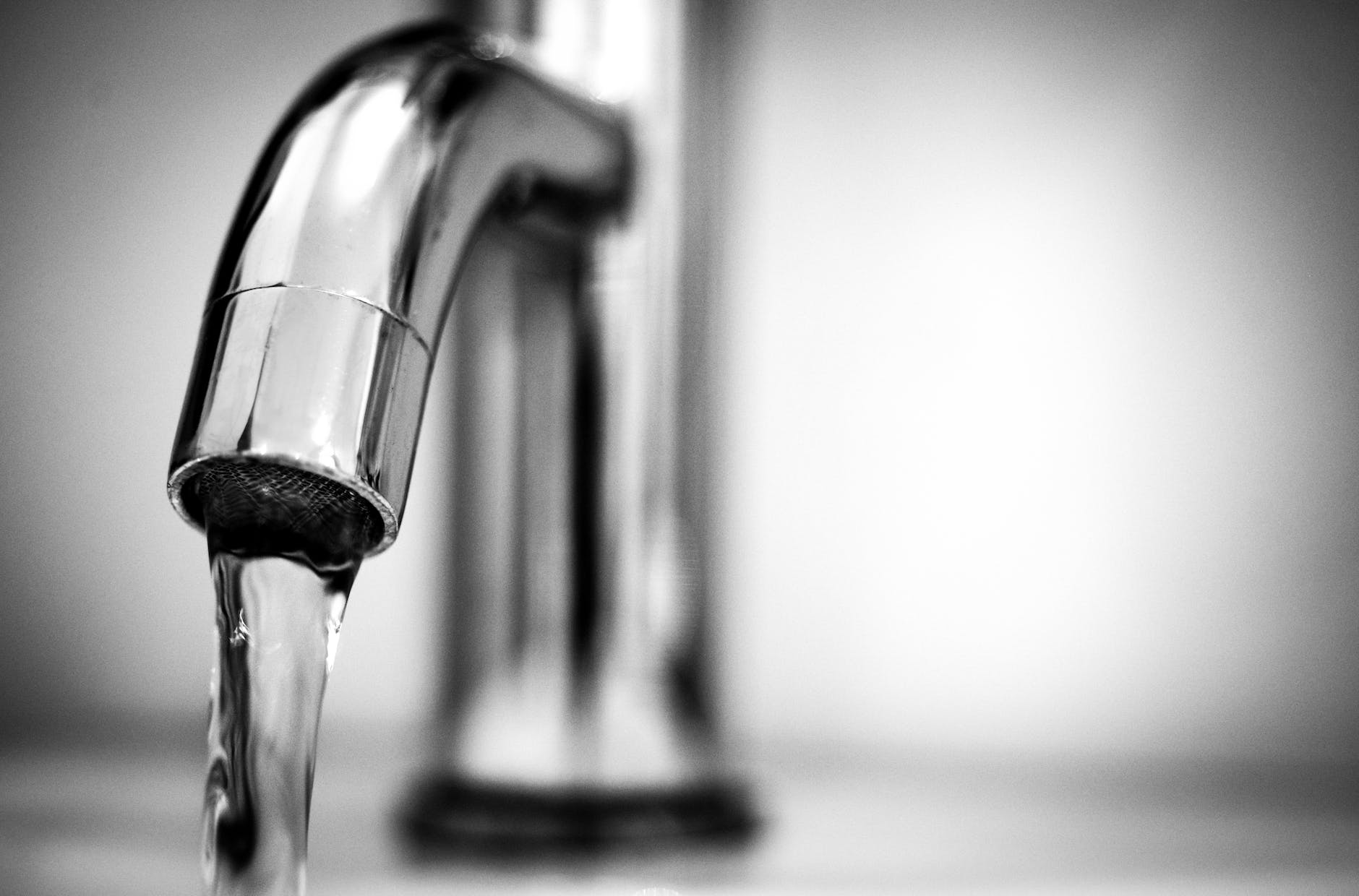
Bottled Water vs. Tap Water
Below is a comparison of Bottled Water and Tap Water based on various factors:
| Factor | Bottled Water | Tap Water |
| Source | Bottled from various natural sources or municipal water | Sourced from local lakes, rivers, groundwater, or reservoirs |
| Quality Regulation | Regulated by government authorities (e.g., FDA in the US) | Regulated by local water utilities and health agencies |
| Treatment Process | Undergoes filtration and purification processes | Treated through a series of processes (e.g., chlorination, filtration) |
| Carbon Footprint | Has a higher environmental impact due to production and transport | Lower environmental impact as it is distributed locally |
| Cost | Typically more expensive compared to tap water | Less expensive, often included in utility bills |
| Convenience | Portable and readily available in various sizes and types | Available at home taps, but may require a reusable container |
| Taste | May have a distinct taste depending on the source and minerals | Can vary in taste based on the water source and treatment |
| Environmental Impact | Contributes to plastic waste if not recycled properly | Reduces single-use plastic waste if tap water is used with a reusable bottle |
| Safety | Generally safe, but quality may vary based on the brand | Subject to strict regulations and regular testing for safety |
| Degassing | Some bottled water may be intentionally carbonated | Natural gas release may occur if the water is exposed to air |
| Mineral Content | Varies based on the source, some may have unique mineral composition | Depends on the local geological characteristics |
| Storage | Shelf life is long if unopened, but bottles can take up space | Always available through home plumbing system |
It’s essential to note that the quality of both bottled water and tap water can vary significantly depending on the brand, water source, and local water treatment practices. In many developed countries, tap water is closely monitored and regulated to ensure safety and quality.
For environmental reasons, choosing tap water with a reusable bottle can be a more sustainable option in regions where tap water is safe to drink. However, in areas with unreliable water sources or potential contamination issues, bottled water might be preferred for convenience and peace of mind.
How To Degas Bubbled Water (Why Are There Bubbles In My Water Bottle)
Degassing water is a process of removing dissolved gases, such as carbon dioxide, from the water to reduce or eliminate bubbles. Here are some common degassing techniques that can help achieve this:
1. Letting the Water Sit
One of the simplest degassing methods is to allow the water to sit in an open container for some time. As the water is exposed to the air, the dissolved gases, including carbon dioxide, will slowly escape, leading to a reduction in bubbles.
The amount of time needed for degassing can vary depending on factors like temperature and the initial gas content.
2. Decanting or Pouring
Pouring water back and forth between containers can help release some of the dissolved gases. This process is known as decanting. By gently pouring water from one container to another, the water comes into contact with the air, promoting degassing.
3. Boiling the Water
Boiling water can effectively degas it, as heating causes dissolved gases to escape. Once the water reaches boiling point, the bubbles will rise and dissipate, reducing the overall gas content in the water.
4. Using a Degassing Container
Some specialized containers are designed to promote degassing. These containers typically have a large surface area and allow for increased exposure to air. Pouring water into such containers and leaving it to sit can accelerate the degassing process.
5. Vacuum Degassing
In industrial settings or laboratories, vacuum degassing is a more advanced method used to remove dissolved gases. This process involves placing the water in a vacuum chamber, which reduces the pressure and causes the dissolved gases to escape rapidly.
6. Aeration and Agitation
Although counterintuitive, vigorous aeration or agitation can help remove dissolved gases from water. By introducing air or stirring the water vigorously, gases are exchanged between the water and the air, leading to degassing.
It’s important to note that not all methods of degassing are suitable for everyday use. Boiling, for example, is an effective way to degas water but may not be practical for large quantities or frequent use.
For most regular purposes, simply letting the water sit in an open container for a few minutes should be sufficient to reduce bubbles and improve the taste of the water.
However, if you prefer a completely degassed and still water experience, consider investing in specialized degassing containers or vacuum degassing equipment.
Remember that some bottled waters may intentionally be carbonated, so if you prefer still water, choose still water options without added carbonation.
The Role Of Water Filtration Systems In Bubble Formation And How Using Filtered Water Might Impact The Occurrence Of Bubbles
Water filtration systems play a significant role in bubble formation, particularly when it comes to removing certain dissolved gases from the water.
The presence of gases like carbon dioxide can lead to the formation of bubbles, affecting the taste and overall drinking experience. Here’s how water filtration can impact bubble formation:
1. Removing Dissolved Gases
Water filtration systems, particularly those that utilize activated carbon filters, can effectively remove dissolved gases, including carbon dioxide. When water passes through the filter, the carbon material absorbs and traps the gases, leading to degassing.
As a result, filtered water may have fewer bubbles compared to non-filtered water, especially if it was previously carbonated or contained other dissolved gases.
2. Reducing Chlorine Levels
Some water filtration systems, like activated carbon or charcoal filters, also help reduce chlorine levels in tap water.
Chlorine can contribute to the taste and odor of water, and its presence might influence bubble formation. By reducing chlorine content, filtered water can taste and feel cleaner, potentially leading to a smoother drinking experience with fewer bubbles.
3. Enhancing Water Quality
Filtration systems can improve water quality by removing impurities and contaminants, which might indirectly impact bubble formation. Water with higher impurity levels might have a higher gas retention capacity, leading to more bubbles.
Filtered water, on the other hand, has a reduced impurity content, resulting in a cleaner and clearer appearance with potentially fewer bubbles.
4. Balancing Mineral Content
Some filtration systems, like reverse osmosis, can reduce the mineral content in water. While minerals are essential for health, excessive amounts can contribute to the formation of bubbles, particularly in carbonated water.
A balanced mineral content in filtered water might result in a more neutral taste and a reduced likelihood of bubbles.
5. Stabilizing pH Levels
Filtration systems can help stabilize the pH levels of water, which can influence gas solubility. Water with a more balanced pH might have a reduced capacity to hold dissolved gases, leading to fewer bubbles.
It’s good to note that while water filtration can impact bubble formation and improve the taste of water, the actual occurrence of bubbles might also depend on other factors, such as water temperature, atmospheric pressure, and agitation during handling.
Using filtered water may provide a more consistent drinking experience, especially if you prefer still water or if your tap water has a distinct taste or odor. However, if you enjoy the effervescence of carbonated water, filtration might reduce the dissolved gases, resulting in a less bubbly experience.
Why Does My Tap Water Have Bubbles (Why Are There Bubbles In My Water Bottle)
As I mentioned earlier, tap water can have bubbles for various reasons, including:
- Air: Sometimes, air can get trapped in the water as it travels through the pipes or during the water treatment process. This can cause bubbles to form when the water comes out of the tap.
- Dissolved gases: Tap water can contain dissolved gases like oxygen, nitrogen, and carbon dioxide. If the water temperature changes, it can cause these gases to come out of solution and form bubbles.
- Water pressure: Changes in water pressure can also cause bubbles to form in tap water. If the water pressure in your area is high, it can cause air to be mixed into the water, leading to bubbles.
- Contamination: In rare cases, bubbles in tap water can be a sign of contamination, especially if the water has a strange odor or taste. If you’re concerned about the quality of your tap water, you can have it tested by a certified laboratory to determine if it’s safe to drink.
In most cases, bubbles in tap water are harmless and will dissipate quickly. However, if you notice persistent bubbles or other unusual characteristics, it’s a good idea to have your water tested to rule out any potential health hazards.
Is Bubbles In Water Bad
Bubble in water is not bad and you can drink water that has bubbles in it. The main thing is to make sure that the water you’re drinking is safe and clean. If you’re worried about the safety of your water, you can always contact your local water utility to find out more.
Also, when you are drinking water with bubbles, be sure to drink it slowly and not drink too much of it. If you rush it, there could be a problem as the bubble may cause over-bloating.
Why Are There Bubbles In My Tap Water
There are a few reasons why your tap water might have bubbles in it. One reason could be the temperature and pressure used to send the water through the pipe.
Another reason could be that your municipality is using a process called fluoridation to treat the water. This process involves adding fluoride to the water in order to improve dental health. When the water is fluoridated, it can cause small bubbles to form.
If you are concerned about the quality of your tap water, you can always contact your local water supplier for more information but municipalities will not release harmful chemicals into your tap.
Why Do Bubbles Form In Water Overnight?
When water is left overnight, it often forms small bubbles on the surface. This is because the water molecules are attracted to the air molecules, and as the water molecules move upwards, they form a film around the air molecules. This film is not strong enough to support the weight of the water molecules, so it eventually breaks and forms bubbles.
Bubbles In Unopened Water Bottle
The bubbles that you see in an unopened water bottle could be caused by a number of factors, including:
- Air trapped during the bottling process: When water is bottled, it is pressurized to prevent the growth of bacteria and other microorganisms. Sometimes, small amounts of air can become trapped in the water during this process, leading to bubbles.
- Changes in temperature: Changes in temperature can cause dissolved gases in the water to come out of the solution, leading to the formation of bubbles. For example, if a cold water bottle is left out in the sun and warms up, the air inside the bottle will expand and create bubbles.
- Movement and agitation: When a water bottle is shaken or jostled, bubbles can form as a result of the movement.
In most cases, these bubbles are harmless and do not affect the quality or safety of the water. However, if you notice an unusual amount of bubbles or other changes in the appearance or taste of the water, it is best to avoid drinking it and contact the manufacturer for further guidance.
Small Bubbles In Water Bottle (Why Are There Bubbles In My Water Bottle?)
The temperature of the air inside the bottle can also change as a result of changes in the temperature of the water. When the water gets colder, the air inside the bottle also gets colder, causing the air’s volume to shrink.
When the water gets warmer, the air inside the bottle also gets warmer, causing the air’s volume to grow. These changes in volume can cause the air inside the bottle to exert pressure on the water, which can also contribute to the formation of bubbles.
READ THIS TOO: Why Does Bottled Water Taste Metallic – Should I Be Worried?
Is Bottled Water With Bubbles Safe To Drink?
Yes, bottled water with bubbles is generally safe to drink. The bubbles in the water are usually just dissolved gases, such as carbon dioxide, which are added during the bottling process to give the water its characteristic dizziness.
These gases do not pose any health risks and are commonly found in many types of beverages, including soda and sparkling water.
However, if the bubbles in the water are accompanied by a strange taste, odor, or color, it may be a sign of contamination and the water should not be consumed. It is always important to check the expiration date and the condition of the bottle to ensure that the water is safe to drink.
Additionally, it is important to store bottled water in a cool, dry place and avoid exposing it to direct sunlight or extreme temperatures, which can affect its quality and safety.
Why Does My Water Have Bubbles (Why Are There Bubbles In My Water Bottle?)
There are a few possible reasons why your water has bubbles:
- Air: If the water is coming from a faucet or tap, it’s possible that air is getting mixed into the water. This can happen if the water pressure changes suddenly or if air gets trapped in the pipes.
- Dissolved gases: Water can also contain dissolved gases like oxygen, nitrogen, and carbon dioxide. If the temperature of the water changes, it can cause these gases to come out of the solution and form bubbles.
- Chemical reactions: Certain chemical reactions can also cause water to bubble. For example, if you add an acid to water, it can release carbon dioxide gas.
- Contamination: In some cases, bubbles in water can be a sign of contamination. If the water has a strange taste or odor, or if the bubbles don’t go away after a few minutes, it’s possible that the water contains harmful substances like bacteria or chemicals.
If you’re concerned about the bubbles in your water, you may want to have your water tested to determine the cause.
Why Does Water Get Bubbles When You Leave It Out? (Why Are There Bubbles In My Water Bottle)
When you leave water out, it may develop bubbles due to the presence of dissolved gases in the water. Air contains several gases, including nitrogen, oxygen, and carbon dioxide, which can dissolve in water to varying degrees. When water is exposed to the air, some of these gases may dissolve in the water, which can cause small bubbles to form.
Another possible reason why water may develop bubbles when left out is due to the growth of microorganisms. Bacteria and other microorganisms are present in the air and can settle on the surface of the water.
As these microorganisms consume organic matter in the water, they may produce gas as a byproduct, which can cause bubbles to form.
It is important to note that if the water has a strange taste, odor, or color, it may be a sign of contamination, and you should not consume such water.
Additionally, if the water has been left out for an extended period of time, it may become stale and less palatable, so it is best to discard it and replace it with fresh water.
RELATED: How Many Ounces Is A Water Bottle – Discover The Perfect Hydration Companion
FAQs On Why Are There Bubbles In My Water Bottle
Why Are There Bubbles In My Water Bottle When I First Open It?
Bubbles in your water bottle when you first open it are often a result of trapped air during the bottling process. These bubbles should dissipate relatively quickly and are usually harmless.
Can I Drink Water With Bubbles In It?
Yes, you can drink water with bubbles in it. These bubbles are typically just air or dissolved gases and don’t pose any health risks. They can affect the taste or texture slightly but are generally safe to consume.
How Can I Prevent Bubbles From Forming In My Water Bottle?
To prevent bubbles, start with high-quality filtered water, avoid carbonated water, fill your bottle slowly, and ensure your bottle is clean and free from defects. Storing your bottle at a stable temperature and avoiding direct sunlight can also help.
Why Do Bubbles Sometimes Appear In My Reusable Water Bottle Even After Cleaning It?
Bubbles can persist if there is residue or soap left in the bottle after cleaning. Make sure to rinse your bottle thoroughly to remove all soap residue and consider using a bottle brush for a more thorough cleaning.
Are Bubbles In Bottled Water A Sign Of Contamination?
Bubbles in bottled water are not necessarily a sign of contamination. They are often a result of air entrapment during the bottling process or temperature fluctuations. However, if you notice unusual or persistent bubbles, it’s a good idea to check the water’s source and quality.
Can A Reusable Water Bottle Affect The Taste Of The Water And Create Bubbles?
Yes, the material and design of a reusable water bottle can sometimes affect the taste and create bubbles. Opt for high-quality bottles made from materials like stainless steel or glass, which are less likely to introduce unwanted flavors or chemicals.
Are Bubbles In Water Bottles A Sign Of Carbonation?
Bubbles in water bottles are not a sign of carbonation unless you’ve filled the bottle with carbonated or sparkling water intentionally. Most bottled water is not naturally carbonated, so bubbles in regular water bottles are typically due to other factors.
Can I get rid of bubbles in my water bottle once they’ve formed?
Bubbles that have formed in your water bottle will usually dissipate on their own over time. You can help speed up the process by gently shaking or swirling the bottle to release trapped air.
Can Bubbles In A Water Bottle Affect Its Seal Or Integrity?
Bubbles themselves are unlikely to affect the seal or integrity of a water bottle. However, if there are cracks or defects in the bottle, they could allow air to enter, leading to bubble formation.
Are Bubbles In Water Bottles A Sign Of A Health Issue With The Water?
Bubbles in water bottles are typically not a sign of a health issue with the water itself. However, if you have concerns about the water quality, it’s a good idea to have it tested for contaminants by a certified laboratory.
The Bottom Line On Why Are There Bubbles In My Water Bottle?
That is it, you have the answer to the question “Why Are There Bubbles In My Water Bottle?” There are several reasons why there may be bubbles in your water bottle. The most common reason is that the water has been carbonated. Another possibility is that there are minerals in the water that are coming out of the solution.
But bubbles in your water bottle do not make the water a bad liquid. You can drink the water with bubbles but you need to drink it slowly and not drink too much of it. You might want to check out the best and most healthy water bottles.










